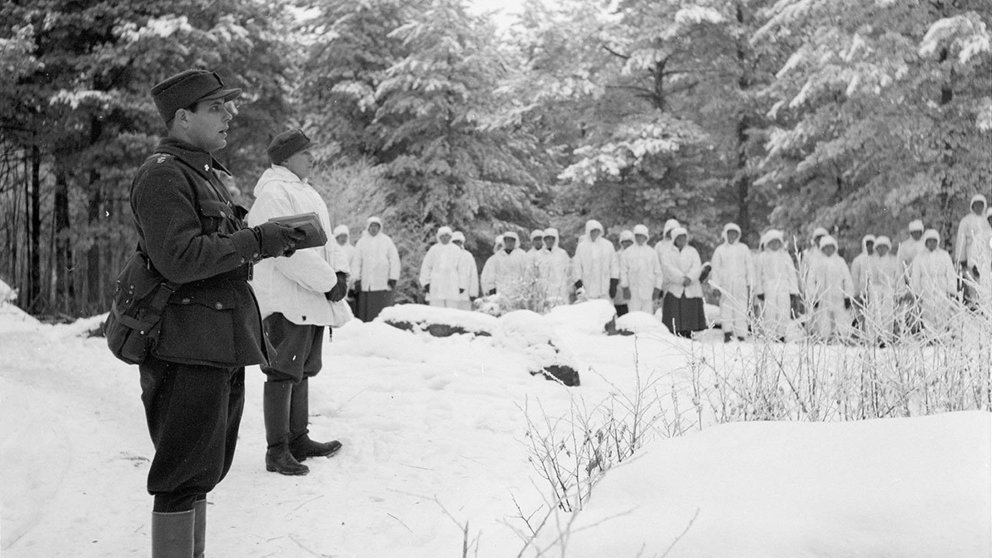For many, winter in Finland is a prolonged nightmare.
It comes, it snatches the short-lived summer vitality and then it does not want to go. You will hardly meet a Finn who enthusiastically cherishes winter.
You do not lead a life in winter; you endure the season and you survive it. Then you heave a sigh of relief when it is finally over.
This cold, harsh season of the year, however, gave the Finns an edge over the disproportionately mighty Soviets during the Winter War. The winter was a natural advantage for Finns.
Sub-zero temperatures, lands buried under thick layers of snow and only a few hours of daylight –all the extreme adversities in nature proved to be blessings in disguise for the Nordic nation as they took on their giant eastern neighbour.
It was incredibly cold in Finland during the winter of 1939-40. In fact, that winter was the second coldest since 1828. Conditions were severe, with temperatures regularly plummeting to -35 degrees Celsius and below.
Although Finnish soldiers had never fought during winter, they were not unfamiliar with glacial temperatures and snowbound landscapes. They had little trouble adjusting to the nature’s harshness.
Enemies from warmer parts of the Soviet Union
The Red Army soldiers, however, were clueless. Many of them were from warmer parts of the Soviet Union and had little to no training in how to fight in unforgiving environmental conditions.
In the beginning, they were not too bothered about the cold. They had high spirits. They had supplies of new weapons. They thought it would be an easy win and a quick victory too.
But as the winter was setting in with its full intensity and temperatures were dropping fast, they began to feel the harshness of the Nordic winter. They were not prepared for it because they did not see something like this coming.
And that is when the real war began, the kind of war that the name “Winter War” implies.
The cold agent of death
The cold made everything complicated for the Soviets.
Their weapons jammed. Finns had the knowledge to keep weapons operational in winter by cleaning them often with a mixture of gasoline and gun oil, but the Soviets did not.
Moreover, their weapons became useless if they greased them too heavily. Truck batteries died if they did not keep the engines running for 15 minutes in every two hours.
Apart from weapons, their food and drugs froze, and so did their hands and feet. Many of them sustained frostbites. Their medical services were not rightly equipped to provide quick treatment to the soldiers affected by the formidable winter conditions.
Many wounded soldiers just froze to death like grotesque statues.
Dressing for the deep freeze
The Finns had warm tents and cosy dugouts heated by hot stoves, but the Soviets dug snow holes which were their main shelters.
There, they lit fires so that they would not freeze to death. Lighting campfires to get warmth was another option but it made them extremely vulnerable to sniper attacks.
The Red Army also suffered greatly because of improper, inadequate clothing. They helplessly shivered in bone-chilling cold because their uniforms were not warm enough.
They wore lightweight tunics and their undergarments were lighter than what Finns usually use in summer. At the outset, they did not even have overcoats.
Finnish troops, on the other hand, were not affected by cold at all. In his book 'A Frozen Hell: The Russo-Finnish Winter War of 1939-1940', US historian William R Trotter wrote that Finnish soldiers dressed in layers of heavy woollen underwear, sweaters, several pairs of socks, boots lined with reindeer fur, and lightweight snow capes. Any of the layers could be removed as needed.
They even managed to take turns to be in the sauna depending on the intensity of fighting whereas the Soviets lacked facilities to even take proper baths.
Fuelling the body
Because of frigid conditions, soldiers needed more food to gain enough energy and keep the body fit.
The Finns fulfilled the increased calorie requirements as they had regular access to hot, hearty food. It is said that an army marches on its stomach and the Finns were able to keep their morale high despite the severity of winter primarily because they consumed good food.
The Soviets only had black hard bread and unsweetened tea, leaving them very hungry and exhausted. As much as they knew they were fighting a war, they also felt like it had become a desperate struggle to stay alive in the northern wilderness.
Gliding in, sliding out
Skiing is another unmatched advantage the Finns had that gave them great winter mobility.
The Soviets had strong artillery and air power, but those were not very useful in the snow-covered Finnish terrain. Finnish troops, however, were skilled skiers who had been traversing deep forests on skis since their childhood.
Finnish ski troopers silently came out of pine forests and launched surprise ambushes before dispersing and gliding off swiftly to hide again in the woods. This freedom of manoeuvres gave them more options to attack the Soviets from many different angles.
The Soviets had far too many soldiers and tanks than the Finns, but the latter made their geographical position and severe weather their greatest ally.
The Finnish winter strategy remains a wonderful example of how a seemingly big weakness can be turned into an evidently great strength.
*NOTE: This article is the second of an 8-part series on the Winter War to be published from 30 November (the day the conflict started) til 13 March (when it ended). Next read: 'How Finns used motti tactic to entrap Soviets in Winter War' coming out on 16 December.









